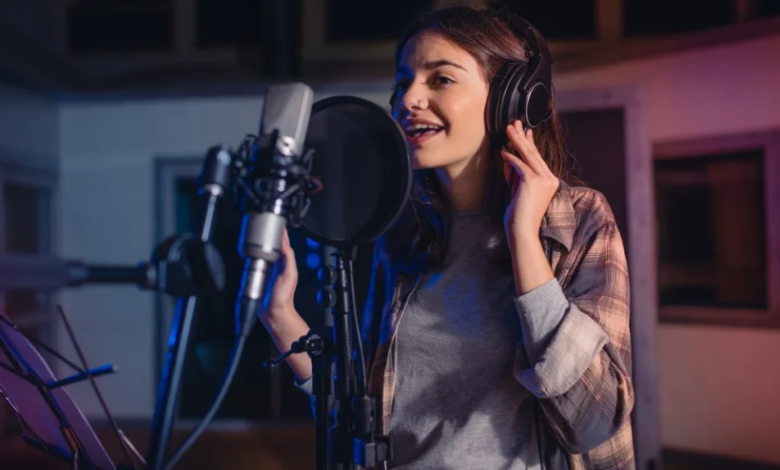What Is the Role of Technology in Modern Music Creation?

The Digital Shift in Music
Modern music has undergone a massive transformation, thanks in large part to technology. From how songs are composed and recorded to how they’re distributed and consumed, the music industry today is more digital than ever. One of the most revolutionary tools emerging in this space is text to music, which allows creators to generate music using written prompts—an innovation once considered science fiction.
Technology now plays a central role in making music more accessible, diverse, and experimental. Whether you’re a bedroom producer or a seasoned composer, today’s tech offers endless possibilities to create, refine, and share music without traditional constraints. This article explores how technology has reshaped music creation, with a particular focus on the rising influence of AI and text-based music generation tools.
How Music Production Has Evolved with Technology
Before the digital era, music production was heavily reliant on physical instruments, analog recording gear, and expensive studio time. But over the past two decades, the landscape has shifted dramatically.
Digital Audio Workstations (DAWs) like Ableton Live, FL Studio, and Logic Pro have become industry standards. These platforms allow musicians to record, edit, mix, and master tracks entirely on a computer. They also support plugins and virtual instruments, giving artists access to thousands of sounds without needing physical gear.
Another major development is cloud-based collaboration. Artists across the globe can now co-produce tracks in real-time, breaking down geographic barriers. Plus, high-speed internet and cloud storage mean files can be shared and backed up seamlessly.
Technology has replaced traditional studio workflows with digital tools that make music production faster, cheaper, and more collaborative.
The Rise of AI in Music Composition
Artificial Intelligence (AI) has become a buzzword in many industries, and music is no exception. AI-driven tools are being used to compose melodies, harmonies, and even entire tracks. This isn’t just theoretical—companies like OpenAI, Google, and Amper Music are already offering platforms that generate music in various genres.
These AI systems analyze massive datasets of music to learn patterns, chord progressions, and stylistic nuances. By understanding these elements, AI can produce music that feels both coherent and creative.
Musicians use AI not to replace their creativity but to enhance it. For instance, a producer might input a genre and mood, and the AI returns a melodic idea, which the artist can then build upon. This hybrid model supports faster ideation and inspiration, especially in high-volume content environments like video games, film, and social media.
AI tools are enabling musicians to generate original compositions quickly, offering a collaborative partner for creative exploration.
What Is Text to Music and How Does It Work?
Text to music refers to software or AI models that generate music from written prompts. You might type something like “a calming acoustic melody for a rainy day” and the tool will output a matching audio track. This technology leverages natural language processing (NLP) and music synthesis models to interpret text and convert it into musical data.
These tools often integrate with larger platforms, allowing for further customization. Some even offer multiple style presets or allow users to adjust tempo, instrumentation, and mood. While still in the early stages, text to music has immense potential to democratize music creation by removing technical barriers.
Text to music tools turn simple written prompts into full-fledged audio tracks, making music creation accessible to non-musicians and professionals alike.
See also: Anxiety, Burnout, and Self-Esteem: The Hidden Mental Health Battles Among Women
Benefits of Technology in Modern Music Creation
- Accessibility: You no longer need a professional studio or formal training to create music. Apps and online platforms enable anyone with a smartphone to compose, record, and publish music.
- Speed: Ideas can be turned into finished songs within hours, thanks to automated mixing tools and AI composition.
- Experimentation: Virtual instruments and AI suggestions allow for creative experimentation without additional cost.
- Collaboration: Musicians can work together in real-time from different continents, aided by cloud-based tools.
- Personalization: AI tools can adapt to a creator’s style, offering suggestions that align with their artistic vision.
Technology empowers creators by offering tools that improve accessibility, speed, collaboration, and creative freedom in music production.
Challenges and Limitations to Consider
Despite its many benefits, the integration of technology in music creation is not without challenges:
- Quality vs. Quantity: The ease of production can sometimes lead to oversaturation and lower-quality content.
- Loss of Human Touch: Some argue that AI-generated music lacks the emotional depth of human-created compositions.
- Copyright Concerns: Who owns the rights to music created by AI or text to music tools? This legal gray area is still being defined.
- Technical Literacy: While tools are becoming more user-friendly, some still require a learning curve, especially when integrating multiple platforms.
While technology enhances music creation, it also introduces challenges like oversaturation, emotional disconnect, and unclear copyright rules.
Real-World Applications and Case Studies
- Film and Game Scoring: AI-generated music is being used to create background scores for indie films and mobile games where budget is limited.
- Content Creators: YouTubers and podcasters use royalty-free AI music to avoid copyright strikes and maintain a consistent brand tone.
- Education: Text to music tools help students understand music theory by showing instant audio examples of written concepts.
For example, a content creator can input a scene description into a text to music tool and receive a tailor-made soundtrack, saving time and cost.
Text to music and AI tools are already being used in film, education, and content creation to simplify and scale musical output.
Future Outlook: Where Is Music Creation Headed?
As machine learning models improve, text to music tools will become more accurate and nuanced. We may soon see:
- Fully adaptive music that changes based on user interaction in real-time (especially in gaming).
- Deeper personalization based on user preferences, even integrating biometric feedback.
- Legal frameworks to protect and credit AI-assisted music creation.
Musicians might shift roles—from performers to curators—using AI tools as co-creators rather than mere assistants.
The future of music creation is interactive, personalized, and AI-driven, where musicians work alongside smart tools to craft immersive experiences.
FAQ: Technology and Modern Music Creation
Q1: What is text to music?
Text to music is the process of generating music from written prompts using AI and machine learning models.
Text to music converts written text into audio, allowing for fast, AI-generated music creation.
Q2: Can AI replace human musicians?
AI is a tool that aids creativity but lacks the emotional depth and intent of human composers. It complements rather than replaces musicians.
AI supports but doesn’t replace human creativity in music.
Q3: Are AI-generated songs protected by copyright?
Currently, copyright laws around AI music are still evolving. In many jurisdictions, works created solely by AI may not be eligible for traditional copyright.
The legal status of AI-generated music is still developing, with ownership rights often unclear.
Q4: What tools are available for beginners to start making music?
Tools like BandLab, Soundtrap, and various text to music generators offer beginner-friendly platforms for music creation.
Beginners can use free or low-cost tools to start making music without prior experience.
Q5: Is using AI or text to music considered cheating in music?
Not at all. It’s a creative aid, much like using a synthesizer or sampler. The intent and final output still rely on human vision.
Using AI in music is a form of creative collaboration, not cheating.
Conclusion: A New Era of Creative Expression
Technology has forever changed how we think about and make music. From bedroom producers to major studios, tools like text to music and AI composition are reshaping the creative process. While challenges remain, the overall impact is one of empowerment—giving more people the ability to turn ideas into sound.
Technology, especially tools like text to music, is redefining modern music creation by increasing access, creativity, and collaboration.



